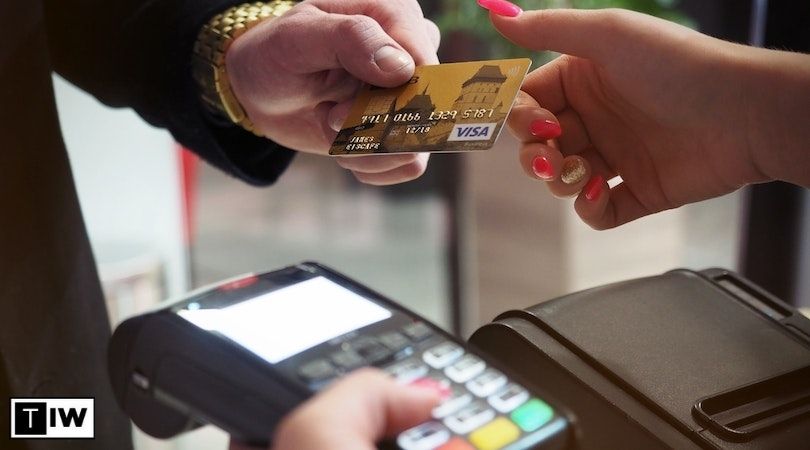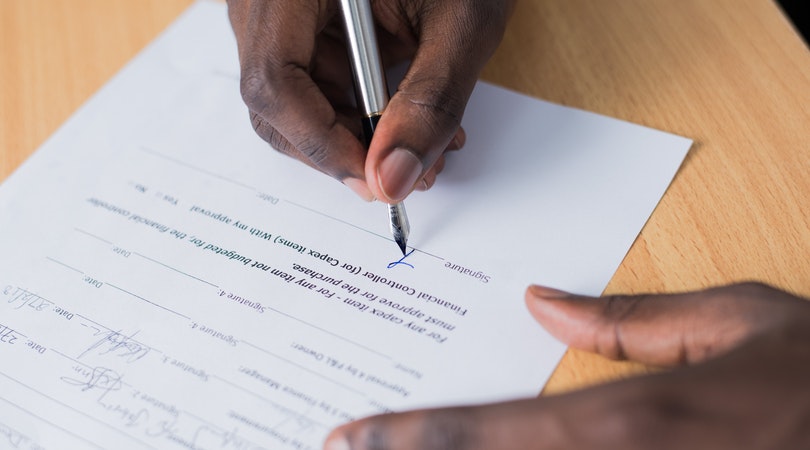Explore
How to Stop Impulse Buying: 10 Sure Ways

Are you tired of falling victim to impulsive purchases that drain your bank account and clutter your life? It’s time to regain control of your spending habits and put an end to impulse buying once and for all. In this blog article, I will explore the ten best strategies to help you curb those spontaneous shopping urges.
From understanding the psychology behind impulse buying to practical tips for breaking the cycle, you will discover actionable steps that can lead to a more intentional and mindful approach to your purchasing decisions. So, let’s dive in and learn how to stop impulse buying and start saving both your money and your sanity.
Impulse Buying vs Planned Purchases
To effectively address impulse buying, it’s crucial to understand the key differences between impulse buying and planned purchases. Impulse buying refers to spontaneous and unplanned purchases made without careful consideration or intention.
These purchases are often driven by emotions, marketing tactics, or the need for instant gratification. In contrast, planned purchases are premeditated and involve thoughtful decision-making. They are based on a clear need or want that has been considered over time, often accompanied by research, budgeting, and comparison shopping.
Recognizing the disparity between impulse buying and planned purchases is vital for combating impulsive spending habits. By differentiating the two, individuals can develop strategies to resist impulsive urges, exercise self-control, and make more informed purchasing decisions aligned with their long-term financial goals.
Dangers of Impulse Buying
Impulse buying can have several negative consequences that can significantly impact one’s financial well-being. It’s important to be aware of the dangers associated with impulsive spending to develop effective strategies for curbing this behavior.
A. Financial Strain
Frequent impulse buying can lead to financial instability and debt. Unplanned purchases, especially for non-essential items, can quickly accumulate and strain your budget. Over time, this can disrupt your financial goals, hinder savings, and potentially lead to long-term financial hardship.
B. Buyer’s Remorse
Impulse purchases often result in buyer’s remorse, the feeling of regret or guilt after making a purchase. This remorse can stem from realizing the item was unnecessary, overpriced, or didn’t provide the expected value. Dealing with buyer’s remorse can create stress and negatively impact your overall well-being.
C. Lack of value and clutter
Impulse purchases are often made without much consideration for practicality or long-term usefulness. As a result, these items may end up being unused or forgotten, adding to clutter in your living space. Accumulating unnecessary possessions not only wastes money but also creates an environment that can be mentally and physically overwhelming.
D. Impaired Financial Goals
Impulse buying can hinder progress toward important financial objectives, such as saving for emergencies, paying off debts, or investing for the future. Money spent on impulsive purchases could have been allocated to these crucial areas, delaying or derailing your financial plans.
E. Emotional and Psychological Effects
Impulse buying is often driven by emotions, such as stress, boredom, or a desire for instant gratification. Relying on impulsive purchases as a coping mechanism or source of happiness can lead to an unhealthy relationship with consumerism. This dependence on material possessions for emotional fulfillment can negatively impact overall well-being and hinder personal growth.
10 Ways to Stop Impulse Buying
Listed below are the ten(10) best ways to avoid impulsive purchases that you might later regret. They include:
1. Create a Budget
One of the most effective ways to curb impulse buying is by creating and sticking to a budget. Setting a budget allows you to allocate your money wisely and prioritize your spending on essential items and financial goals. Start by examining your income and expenses, and determine how much you can realistically afford to spend on discretionary purchases.
This will help you establish spending limits and prevent impulsive splurges that can derail your financial stability. To create a budget, track your expenses for a month and categorize them into necessary and discretionary spending. Identify areas where you tend to overspend or make impulsive purchases.
Once you have a clear understanding of your spending patterns, set specific limits for each category, including entertainment, clothing, dining out, and non-essential items. Be realistic but firm with yourself when setting these limits.
2. Identify the Triggers
Understanding the triggers that lead to impulse buying is crucial in overcoming this behavior. Various factors can contribute to impulsive purchases, such as emotional states, environmental cues, and social pressures. Take some time to reflect on the situations, emotions, or thoughts that typically precede your impulse-buying episodes.
Are you more likely to make impulsive purchases when you’re stressed, bored, or feeling down? Do you find yourself giving in to buying something just because it’s on sale or because you saw a friend with a similar item? By identifying your triggers, you can become more aware of your vulnerabilities and develop strategies to counteract them.
Once you’ve identified your triggers, brainstorm alternative actions or coping mechanisms to replace impulsive buying. For instance, if you tend to shop when you’re feeling stressed, find healthier ways to manage your stress, such as exercising, meditating, or engaging in a hobby.
If you often buy items because of social pressure, remind yourself of your financial goals and the importance of staying true to your budget. In addition, consider removing yourself from tempting situations. Unsubscribe from email newsletters or store mailing lists that frequently advertise sales or promotions.
Avoid browsing online shopping sites or spending unnecessary time in malls or stores. Taking proactive steps to limit your exposure to triggers can significantly reduce the temptation to make impulse purchases.
3. Make a Shopping List
Making a shopping list is a simple yet powerful technique to combat impulse buying. Before heading to the store or browsing online, take the time to create a detailed list of the items you truly need. Include essentials like groceries, household supplies, or specific items you have been planning to purchase.
Having a list helps you stay focused and reduces the chances of getting swayed by impulsive purchases. Stick to your list and resist the temptation to deviate from it. By following a predetermined plan, you can avoid unnecessary spending and make more conscious choices about what you truly need.
When creating your shopping list, consider prioritizing your needs over wants. Distinguish between necessary purchases and discretionary items. This way, you can allocate your resources more efficiently and avoid buying things on a whim.
4. Implement a Waiting Period
Impulse buying often occurs when we make quick, spur-of-the-moment decisions without giving ourselves enough time to evaluate the necessity of the purchase. By implementing a waiting period, you can introduce a valuable pause that allows you to reconsider before making impulsive purchases.
When you feel the urge to buy something on impulse, force yourself to wait for a predetermined period before making the purchase. This waiting period can be a few hours, a day, or even a week, depending on the item and your personal preferences. During this waiting period, take the time to reflect on the purchase.
Ask yourself if the item is something you truly need or if it aligns with your financial goals. Consider whether you can find a similar item at a better price or if you can wait for a sale. In many cases, you will find that the initial impulse subsides, and you realize that you do not actually need or want the item as much as you initially thought.
Implementing a waiting period helps you break the cycle of instant gratification and promotes more thoughtful decision-making.
5. Avoid Temptation
One of the key strategies to prevent impulse buying is to actively avoid situations that trigger impulsive urges. Temptation is often found in the form of flashy displays, enticing sales, or persuasive advertising. By minimizing exposure to these triggers, you can reduce the likelihood of succumbing to impulse purchases.
When possible, avoid window shopping or aimless browsing. Instead, shop with a purpose and a specific list in mind. If you’re tempted by online shopping, consider using browser extensions or apps that block or limit access to shopping websites during designated times.
Additionally, unsubscribe from promotional emails and unsubscribe from store newsletters to avoid being lured by tempting offers. Another effective way to avoid temptation is to find alternative activities or hobbies that don’t involve spending money.
Engage in activities that bring you joy and fulfillment, such as exercising, reading, spending time in nature, or pursuing creative outlets. By occupying your time and mind with enjoyable experiences, you’ll be less likely to seek instant gratification through impulsive purchases.
6. Practice Mindful Spending
Mindful spending is about being intentional and fully aware of your purchasing decisions. It involves taking the time to consider the value and importance of a purchase before making it. By practicing mindful spending, you can avoid impulse buying and ensure that your money is spent in alignment with your values and priorities.
Before making a purchase, ask yourself a series of questions. Is this item something I truly need? Will it bring long-term value or joy to my life? Can I afford it within my budget? By pausing and reflecting on these questions, you can make more deliberate choices that align with your financial goals and values.
Another aspect of mindful spending is practicing gratitude for what you already have. Take a moment to appreciate the possessions and experiences you already enjoy. Cultivate a sense of contentment and avoid the mindset of constantly seeking more.
This shift in perspective can reduce the desire for impulsive purchases driven by a sense of scarcity or the need for instant gratification.
7. Track Your Expenses
One effective way to gain control over impulse buying is to track your expenses diligently. By keeping a record of your spending habits, you can become more aware of where your money is going and identify areas where you tend to make impulsive purchases.
Tracking expenses helps you develop a clearer picture of your financial situation and enables you to make informed decisions about your spending. Start by recording every expense, no matter how small, for a set period of time, such as a month.
Use a notebook, a spreadsheet, or a budgeting app to categorize your expenses into different categories, such as groceries, utilities, entertainment, and discretionary spending. This process allows you to see patterns and trends in your spending habits.
Once you have a clear understanding of your expenses, analyze the data to identify areas where you tend to overspend or make impulsive purchases. Look for patterns or triggers that lead to impulse buying episodes. Are there certain types of products or situations that consistently result in impulsive spending? By pinpointing these patterns, you can take proactive steps to address them.
8. Set your Financial Goals
Setting clear and meaningful financial goals can significantly help in curbing impulse buying. When you have a sense of purpose and direction for your money, it becomes easier to resist the allure of impulsive purchases that might derail your progress.
Start by defining your short-term and long-term financial goals. Short-term goals could include saving for a vacation, paying off credit card debt, or building an emergency fund. Long-term goals might involve saving for retirement, purchasing a home, or funding your child’s education.
Once you have established your goals, break them down into smaller, actionable steps. Determine how much money you need to save each month or each paycheck to reach your goals within a specified time-frame. Having concrete targets and a plan of action provides clarity and motivation to make conscious spending decisions.
To further reinforce your goals, visualize the benefits of achieving them. Imagine the financial security, freedom, or sense of accomplishment that comes with reaching your objectives. This mental picture can help you resist impulsive purchases by reminding you of the bigger picture and the long-term rewards of disciplined spending.
9. Practice Self-Care
Practicing self-care is an essential component of overcoming impulse buying tendencies. Often, impulsive purchases are driven by emotions or an attempt to fill a void or seek temporary happiness. By prioritizing self-care, you can address underlying emotional needs and reduce the desire to seek instant gratification through impulsive buying.
Engage in activities that nourish your physical, mental, and emotional well-being. Take time for relaxation, exercise, and getting enough sleep. Practice mindfulness or meditation to cultivate a sense of inner calm and awareness. When you take care of yourself holistically, you are less likely to rely on impulsive purchases as a means of coping or finding fulfillment.
Recognize and address any emotional triggers that may lead to impulse buying. Develop healthy coping mechanisms for dealing with stress, boredom, or other negative emotions. For example, instead of turning to shopping, consider journaling, talking to a friend, or engaging in a creative outlet.
Find activities that bring you joy and fulfillment without relying on material possessions.
10. Surround Yourself with Support
Having a supportive network can greatly aid in overcoming impulse buying habits. Share your goal of curbing impulsive spending with trusted family members, friends, or a support group. By vocalizing your intentions, you’re more likely to stay accountable and receive encouragement along the way.
Seek out like-minded individuals who share similar financial goals or work on curbing impulse buying. Connect with them online through forums, social media groups, or personal finance communities. Sharing experiences, tips, and success stories can provide motivation and a sense of camaraderie.
If you have close friends or family members who tend to enable your impulsive buying behavior, have an open and honest conversation with them. Explain your goals and ask for their understanding and support. They may be more willing to encourage responsible spending habits once they understand the positive impact it has on your financial well-being.
Consider partnering with an accountability buddy who has similar goals. Share your progress and challenges with each other regularly. Having someone who understands your journey and can provide guidance and support can make a significant difference in staying on track.
Conclusion
In conclusion, curbing impulse buying is a journey that requires mindfulness, self-awareness, and a commitment to change. By implementing these ten effective strategies, you can regain control over your spending habits and make wiser purchasing decisions.
Remember, it’s essential to understand your triggers, set realistic goals, and prioritize your long-term financial well-being. With practice and perseverance, you can break free from the cycle of impulse buying, build healthier shopping habits, and achieve a more balanced and fulfilling life.
Embrace the power of conscious consumption, and watch as your savings grow and your financial future brightens.
Recommended:
- How to Make Money with Google Maps: Beginner’s Guide
- How to Get Funding for Your Business in Nigeria
- How to Prepare for a Job Interview: 10 Best Tips
- Top 10 Highest-Paying Jobs in Canada
- Top 10 Richest People in Canada
📡Join Our Social Media Channels:
Facebook: theinfoWorth
YouTube: Ralph Finance













